
The Enchanting Charm of Vieux Nice
Discover the timeless allure of Vieux Nice, where historic charm, vibrant markets, and a lively atmosphere create a captivating experience in the heart of Nice, France.
Vieux Nice, or Old Town Nice, is a vibrant, colorful neighborhood that transports visitors back in time with its narrow, winding streets, historic buildings, and lively atmosphere. This part of Nice is a maze of cobblestone lanes lined with bustling markets, quaint cafes, and charming boutiques, offering a sensory overload of sights, sounds, and smells. The architecture showcases a delightful mix of Italian and French influences, with pastel-colored facades and shutters that add to its picturesque appeal. One of the highlights of Vieux Nice is the Cours Saleya market, a bustling hub where you can find fresh produce, flowers, and local specialties like socca, a traditional chickpea pancake. The market transforms into an antique fair on Mondays, offering an array of unique treasures. The neighborhood is also home to several historical landmarks, including the stunning baroque Cathédrale Sainte-Réparate and the impressive Palais Lascaris, a 17th-century aristocratic mansion now serving as a museum. As you wander through the labyrinthine streets, you'll discover countless hidden gems, from cozy wine bars to artisanal gelato shops. The vibrant nightlife of Vieux Nice is another major draw, with a plethora of bars and clubs catering to all tastes. Whether you're interested in history, culture, food, or simply soaking up the lively atmosphere, Vieux Nice offers a rich and multifaceted experience that's sure to captivate every visitor.
Local tips in Vieux Nice
- Visit the Cours Saleya market in the morning for the freshest produce and flowers.
- Wear comfortable shoes as the cobblestone streets can be uneven.
- Explore the narrow side streets for unique shops and hidden gems.
- Try the local specialty, socca, at one of the street vendors.
- Check out the Cathédrale Sainte-Réparate and Palais Lascaris for a dose of history and culture.
- Visit the market on Monday for antique treasures.
The Enchanting Charm of Vieux Nice
Vieux Nice, or Old Town Nice, is a vibrant, colorful neighborhood that transports visitors back in time with its narrow, winding streets, historic buildings, and lively atmosphere. This part of Nice is a maze of cobblestone lanes lined with bustling markets, quaint cafes, and charming boutiques, offering a sensory overload of sights, sounds, and smells. The architecture showcases a delightful mix of Italian and French influences, with pastel-colored facades and shutters that add to its picturesque appeal. One of the highlights of Vieux Nice is the Cours Saleya market, a bustling hub where you can find fresh produce, flowers, and local specialties like socca, a traditional chickpea pancake. The market transforms into an antique fair on Mondays, offering an array of unique treasures. The neighborhood is also home to several historical landmarks, including the stunning baroque Cathédrale Sainte-Réparate and the impressive Palais Lascaris, a 17th-century aristocratic mansion now serving as a museum. As you wander through the labyrinthine streets, you'll discover countless hidden gems, from cozy wine bars to artisanal gelato shops. The vibrant nightlife of Vieux Nice is another major draw, with a plethora of bars and clubs catering to all tastes. Whether you're interested in history, culture, food, or simply soaking up the lively atmosphere, Vieux Nice offers a rich and multifaceted experience that's sure to captivate every visitor.
Iconic landmarks you can’t miss
Colline du Château
Explore the stunning Colline du Château in Nice, a historical park with breathtaking views, lush gardens, and a glimpse into the city's rich past.
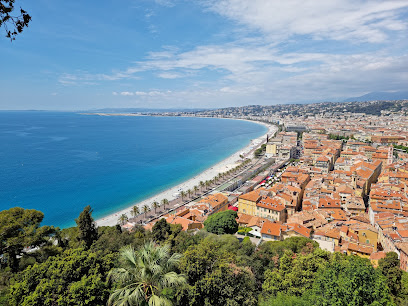
Nice Cathedral
Experience the awe-inspiring beauty of Nice Cathedral, a Baroque masterpiece that embodies the spiritual and cultural heritage of Nice, France.
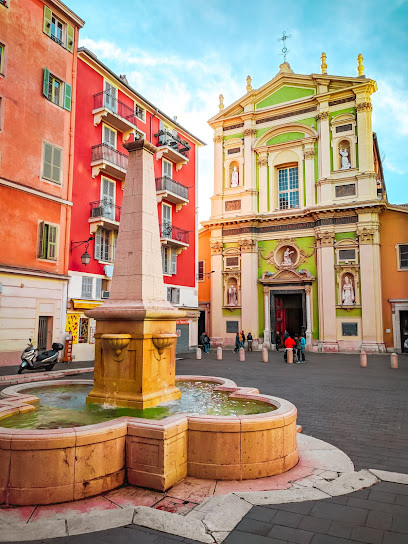
Fontaine du Soleil
Experience the enchanting beauty of Fontaine du Soleil in Nice, a historical landmark that embodies the city’s artistic heritage and vibrant culture.
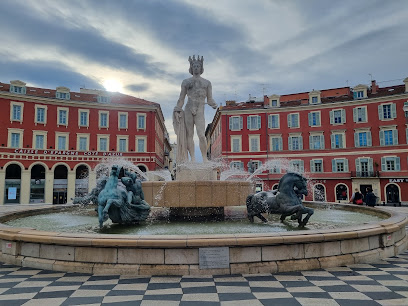
Monument to the Dead of Rauba-Capeu
Discover the poignant beauty of the Monument to the Dead of Rauba-Capeu in Nice, where history meets breathtaking Mediterranean views.
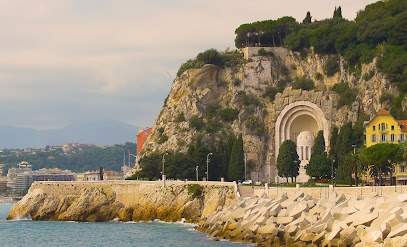
Crypte de Nice
Discover the ancient history of Nice at the Crypte de Nice, an archaeological site showcasing Roman artifacts and architectural wonders beneath the city streets.

Maison d'Adam et Eve
Explore the historic Maison d'Adam et Eve in Nice, a captivating landmark showcasing exquisite architecture and vibrant local culture.
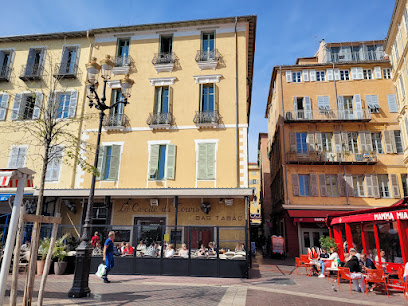
Tour Saint-François
Explore the historical Tour Saint-François in Nice, a medieval gem offering stunning views and a glimpse into the city's rich heritage.
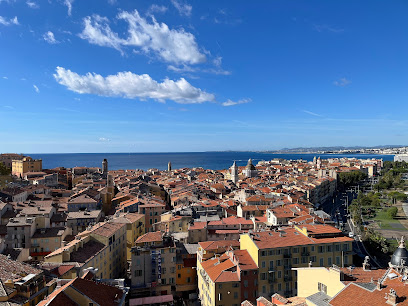
Tour de l'Horloge
Explore the historical elegance of Tour de l'Horloge, a must-visit landmark in Nice, showcasing rich history and stunning architecture.
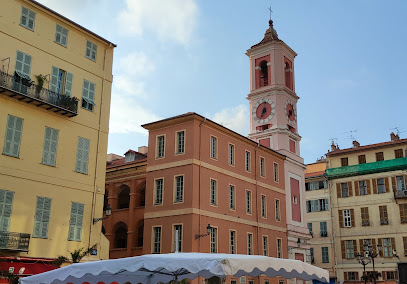
Place Rossetti
Explore Place Rossetti, a historical landmark in Nice, surrounded by stunning architecture, vibrant cafés, and the magnificent Nice Cathedral.
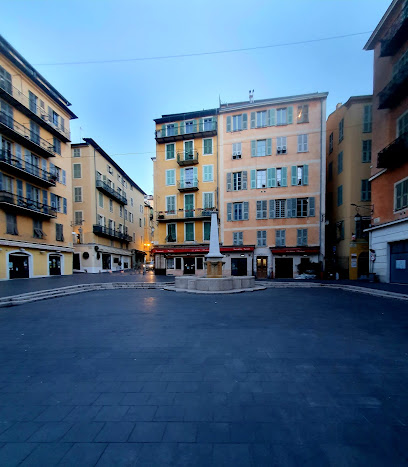
Couvent de la visitation Sainte-claire
Discover the serene charm of Couvent de la Visitation Sainte-Claire, a historical monument in Nice that offers a peaceful retreat and rich cultural heritage.
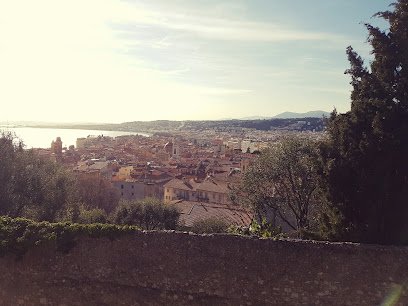
Unmissable attractions to see
Jardin Albert 1er
Explore the tranquil beauty of Jardin Albert 1er, a stunning urban park in Nice featuring lush gardens, artful sculptures, and serene water features.
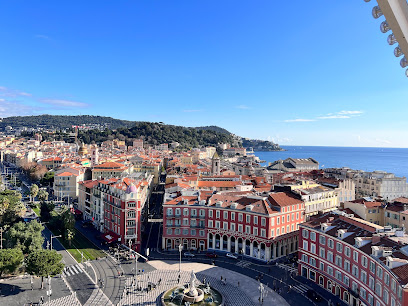
#ILoveNICE
#ILoveNICE - A picturesque coastal gem on the French Riviera, blending stunning views with vibrant culture and unforgettable experiences.
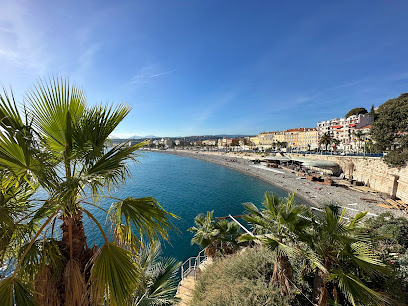
Essential places to dine
La Voglia
Experience authentic Italian flavors at La Voglia in Nice—where every dish tells a story of culinary tradition.
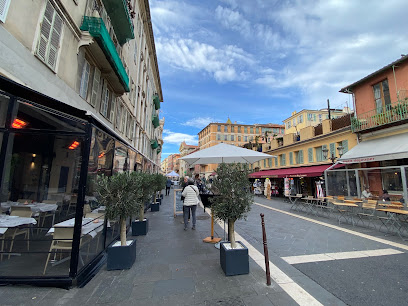
Chez Acchiardo
Experience exquisite French and Italian cuisine at Chez Acchiardo, where Mediterranean flavors come alive in the heart of Nice.
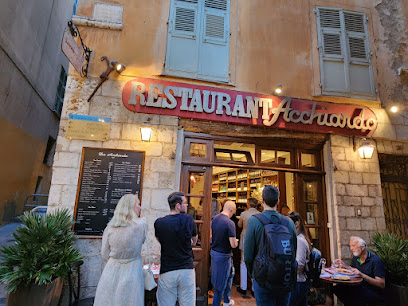
Le Frog
Experience authentic French cuisine at Le Frog in Nice – where every dish is crafted with passion and served with care.
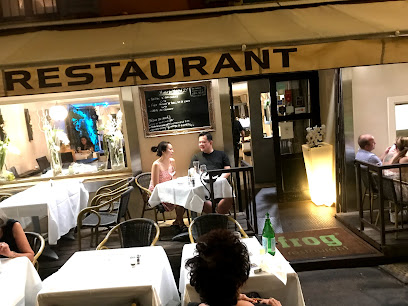
Le Panier
Experience exquisite French cuisine at Le Panier in Nice - where tradition meets innovation in every delicious bite.
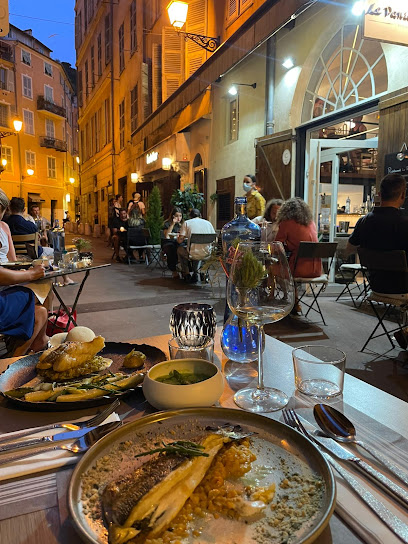
Le Tire Bouchon
Discover authentic French cuisine in Nice at Le Tire Bouchon - where each dish tells a story of tradition and flavor.
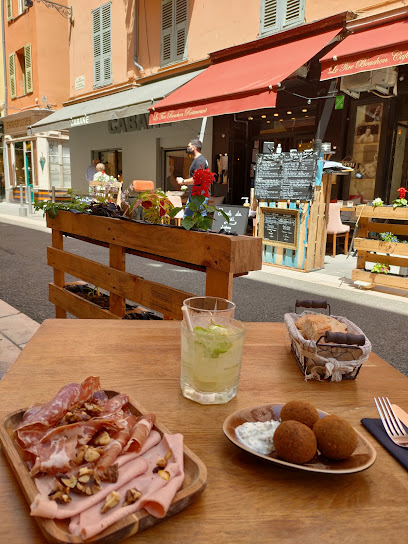
Peppino
Discover Peppino in Nice: Authentic Italian cuisine and charming ambiance await you at this culinary gem.
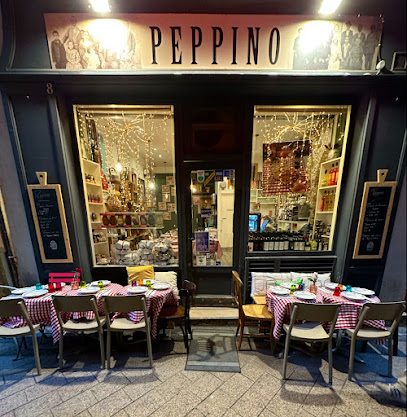
Restaurant sinocantine
Discover exquisite Japanese and Mandarin cuisine at Restaurant Sinocantine in Nice - where authentic flavors meet delightful dining experiences.
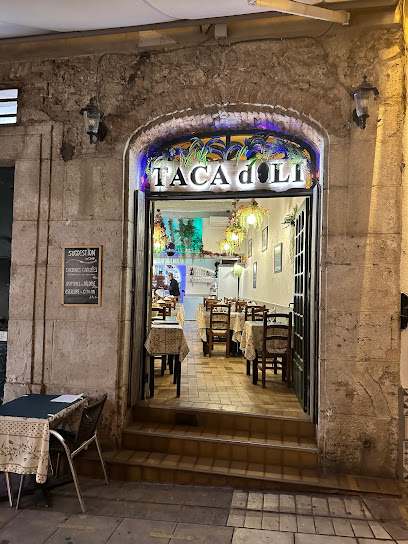
A Buteghinna
Discover authentic French cuisine at A Buteghinna in Nice - where every dish tells a story.
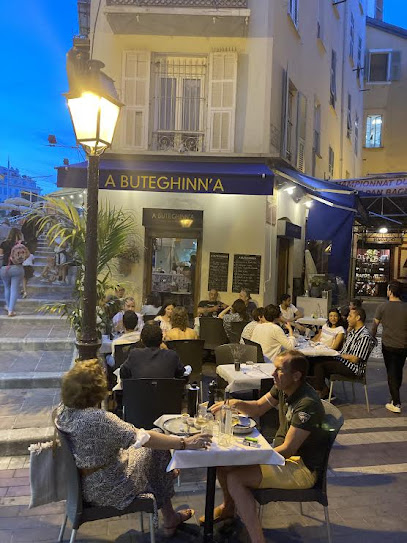
Le p'tit resto
Discover authentic French cuisine at Le p'tit resto in Nice - where every dish tells a story of flavor and tradition.
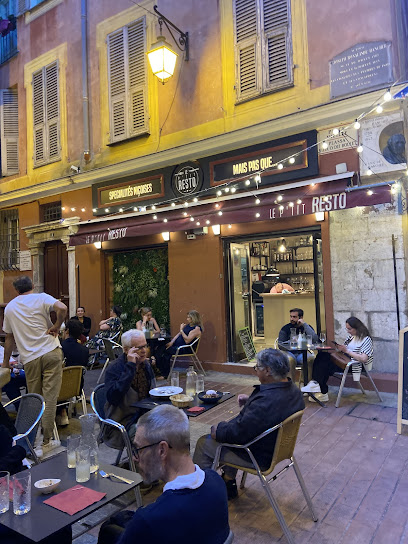
Côté Marais
Discover Côté Marais in Nice – where exquisite French cuisine meets charming ambiance for an unforgettable dining experience.
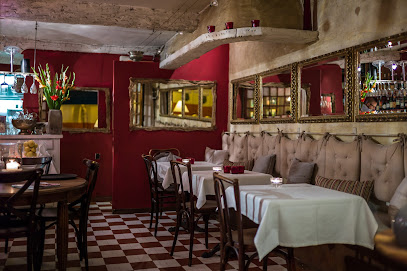
Markets, malls and hidden boutiques
Trésors Publics - Boutique
Explore Trésors Publics in Nice for unique souvenirs and artisanal gifts that reflect the charm and culture of the French Riviera.
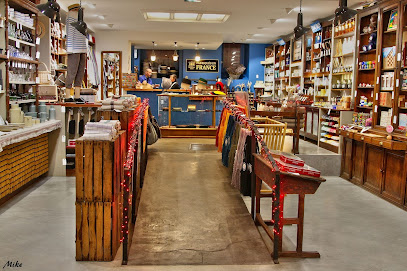
Caprice Vintage Shop
Explore the charm of Nice at Caprice Vintage Shop, where unique vintage clothing and antiques await every style-savvy traveler.
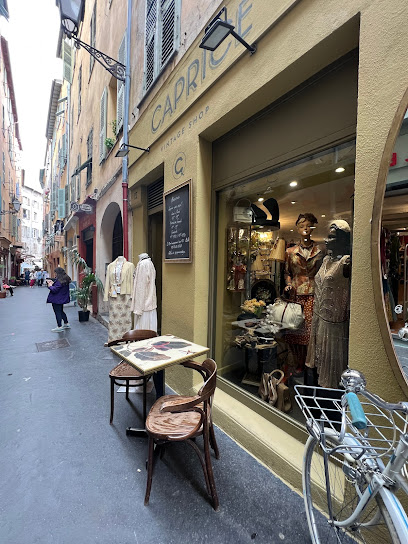
La Belle Epoque Vintage
Explore La Belle Epoque Vintage in Nice for an exceptional selection of timeless fashion treasures that reflect the elegance of bygone eras.

Au Marche De Provence
Explore Au Marche De Provence, where unique souvenirs and local crafts bring the essence of the French Riviera to life.

Boutique Opéra
Discover exquisite linens and charming gifts at Boutique Opéra, a delightful shop in the heart of Nice, perfect for unique souvenirs.
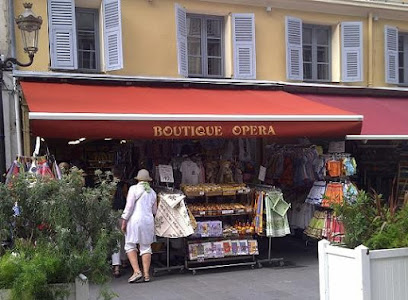
Sunburn
Discover unique souvenirs and local crafts at Sunburn, the charming gift shop in Nice that captures the spirit of the French Riviera.

La vache folle Boutique
Explore La Vache Folle Boutique in Nice for a unique selection of women's clothing that captures the essence of French chic and style.
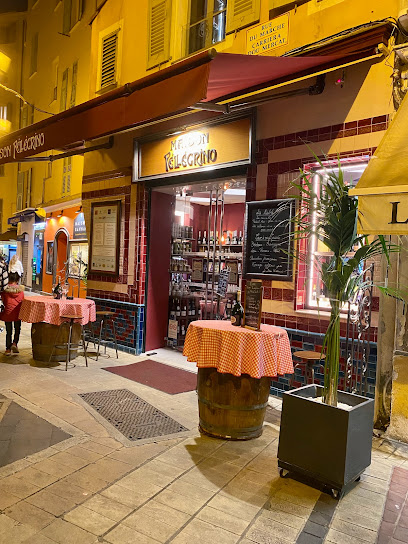
O Soleil de Nice
Explore the essence of the French Riviera with exquisite gift baskets from O Soleil de Nice, perfect for souvenirs and local delicacies.
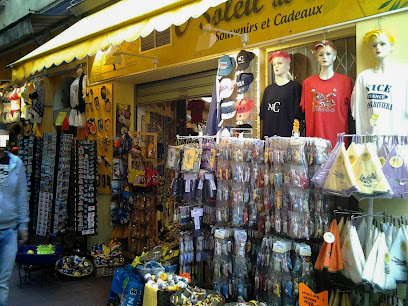
a l'Ombre d'un Olivier
Discover a l'Ombre d'un Olivier, where exquisite gift baskets filled with local delicacies and artisan products await in the heart of Nice.
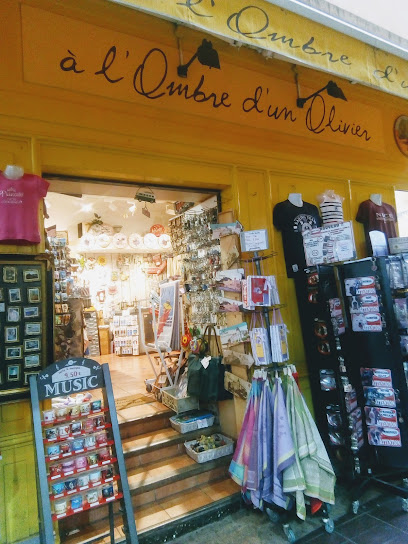
Margotte
Discover unique souvenirs and sports memorabilia at Margotte, the charming shop in the heart of Nice, capturing the spirit of the French Riviera.
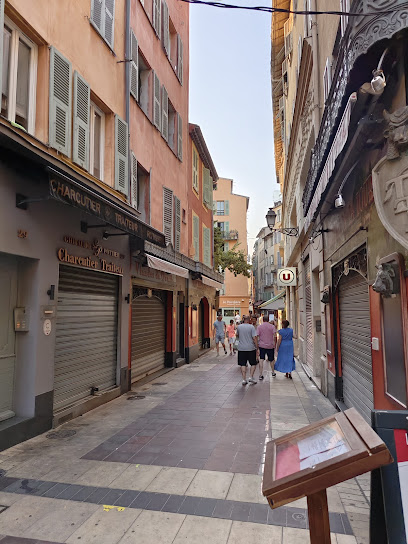
Essential bars & hidden hideouts
Wayne's Bar
Experience the vibrant nightlife at Wayne's Bar, a lively pub in the heart of Nice, offering great drinks, live music, and a welcoming atmosphere.
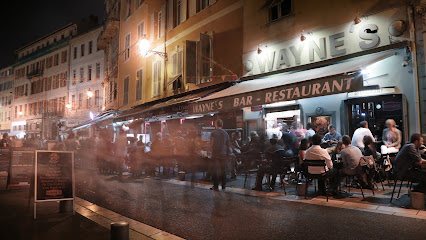
Ma Nolan's Irish Pub
Discover authentic Irish cuisine and vibrant live music at Ma Nolan's Irish Pub, a family-friendly venue in the heart of Nice.
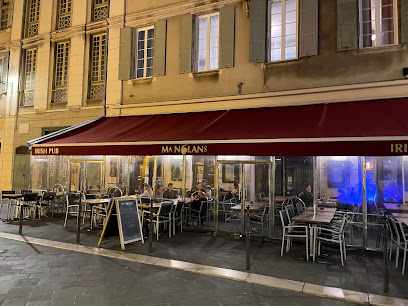
Waka Bar
Experience the vibrant coastal charm of Nice at Waka Bar, where exquisite cocktails meet delicious tapas against stunning Mediterranean views.
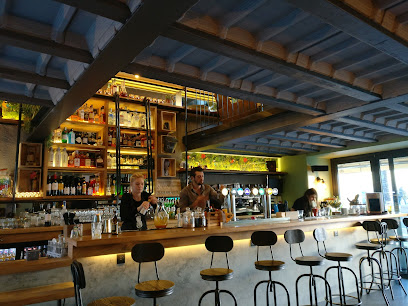
Blast
Discover the lively Blast Bar in Nice, where vibrant atmosphere meets authentic French bistro flavors, perfect for unwinding after a day of exploration.
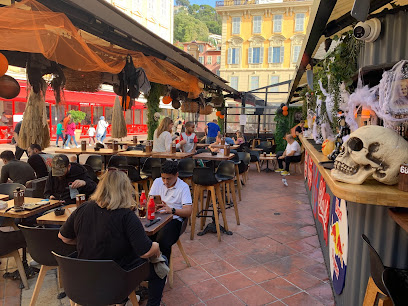
Les Distilleries Idéales
Experience the vibrant nightlife at Les Distilleries Idéales, a premier cocktail bar and pub in the heart of Old Nice, blending history with modern charm.
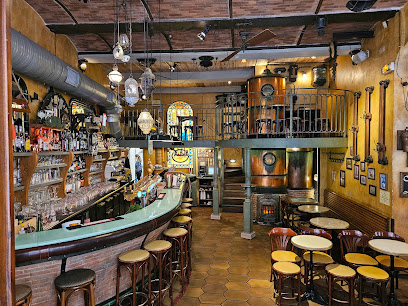
Movida
Discover Movida, a top cocktail bar in Nice offering vibrant nightlife, exquisite cocktails, and delicious tapas amidst stunning views.
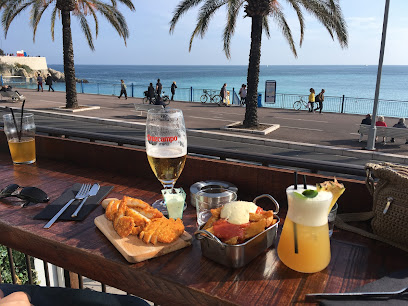
Obsession Pub
Discover the vibrant ambiance and stunning views of the Mediterranean at Obsession Pub in Nice, the perfect lounge for relaxation and socializing.
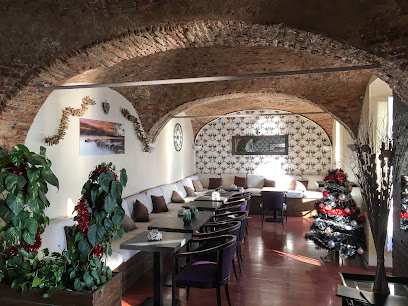
Snug And Cellar
Snug And Cellar in Nice: Your Go-To Irish Pub for Great Drinks, Delicious Food, and Live Music in a Cozy Atmosphere.
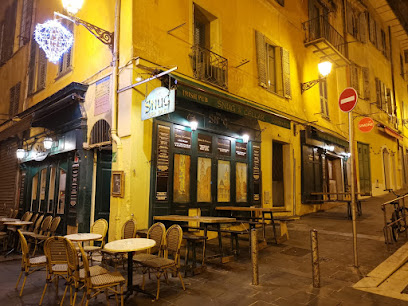
Nomad Bar
Discover the lively Nomad Bar in Nice, where craft beer and delicious meals come together in a vibrant atmosphere, perfect for tourists and locals alike.
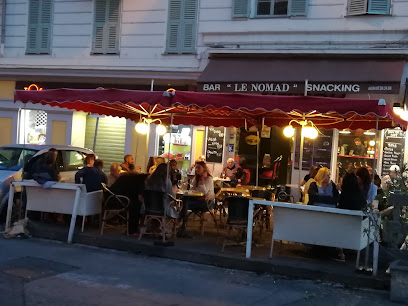
Le Sauveur
Experience the charm of Nice at Le Sauveur, a cozy bar with affordable drinks and a vibrant atmosphere perfect for tourists.
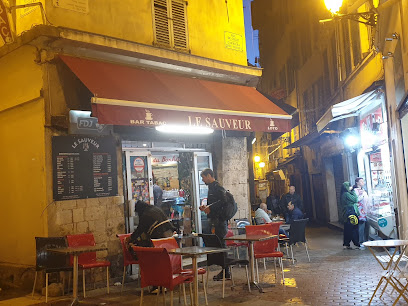
Local Phrases
-
- HelloBonjour
[bohn-zhoor] - GoodbyeAu revoir
[oh ruh-vwahr] - YesOui
[wee] - NoNon
[nohn] - Please/You're welcomeS'il vous plaît/De rien
[seel voo pleh/duh ryehn] - Thank youMerci
[mehr-see] - Excuse me/SorryExcusez-moi/Désolé
[ehk-skew-zay mwa/deh-zoh-lay] - How are you?Comment ça va?
[kohm-mohn sah vah] - Fine. And you?Bien. Et vous?
[byehn. ay voo] - Do you speak English?Parlez-vous anglais?
[pahr-lay voo ahn-glay] - I don't understandJe ne comprends pas
[zhuh nuh kohm-prahn pah]
- HelloBonjour
-
- I'd like to see the menu, pleaseJe voudrais voir la carte, s'il vous plaît
[zhuh voo-dray vwahr lah kart, seel voo pleh] - I don't eat meatJe ne mange pas de viande
[zhuh nuh mahnj pah duh vyand] - Cheers!Santé!
[sahn-tay] - I would like to pay, pleaseJe voudrais payer, s'il vous plaît
[zhuh voo-dray pay-ay, seel voo pleh]
- I'd like to see the menu, pleaseJe voudrais voir la carte, s'il vous plaît
-
- Help!Au secours!
[oh suh-koor] - Go away!Allez-vous en!
[al-lay vooz ahn] - Call the Police!Appelez la police!
[ah-peh-lay lah poh-lees] - Call a doctor!Appelez un médecin!
[ah-peh-lay ahn meh-deh-sahn] - I'm lostJe suis perdu(e)
[zhuh swee pehr-dew(e)] - I'm illJe suis malade
[zhuh swee mah-lahd]
- Help!Au secours!
-
- I'd like to buy...Je voudrais acheter...
[zhuh voo-dray ah-shet-ay] - I'm just lookingJe regarde juste
[zhuh ruh-gahrd zhoost] - How much is it?Combien ça coûte?
[kohm-byen sah koot] - That's too expensiveC'est trop cher
[say troh shair] - Can you lower the price?Pouvez-vous baisser le prix?
[poo-veh voo bay-say luh pree]
- I'd like to buy...Je voudrais acheter...
-
- What time is it?Quelle heure est-il?
[kell eur eh-teel] - It's one o'clockIl est une heure
[eel eh oon eur] - Half past (10)Dix heures et demie
[dees eur eh deh-mee] - MorningMatin
[mah-tahn] - AfternoonAprès-midi
[ah-pray-mee-dee] - EveningSoir
[swahr] - YesterdayHier
[yehr] - TodayAujourd'hui
[oh-zhoor-dwee] - TomorrowDemain
[duh-mahn] - 1Un
[uhn] - 2Deux
[duh] - 3Trois
[trwah] - 4Quatre
[kat] - 5Cinq
[sank] - 6Six
[sees] - 7Sept
[set] - 8Huit
[weet] - 9Neuf
[nurf] - 10Dix
[dees]
- What time is it?Quelle heure est-il?
-
- Where's a/the...?Où est le/la...?
[oo eh luh/lah] - What's the address?Quelle est l'adresse?
[kell eh lah-dress] - Can you show me (on the map)?Pouvez-vous me montrer (sur la carte)?
[poo-veh voo muh mohn-tray (soor lah kart)] - When's the next (bus)?Quand est le prochain (bus)?
[kahn eh luh proh-shahn (boos)] - A ticket (to ....)Un billet (pour ....)
[uhn bee-yeh (poor)]
- Where's a/the...?Où est le/la...?
History of Vieux Nice
-
Vieux Nice, or Old Nice, has roots that trace back to the ancient Greeks, who founded the settlement of Nikaia around 350 BC. This strategic location along the Mediterranean Sea made it a significant trading post. The Romans later took control, and remnants of their influence can still be seen in the architecture and layout of the narrow streets.
-
In the 18th century, Vieux Nice was part of the Kingdom of Sardinia. The region's architecture reflects this period, with baroque buildings such as the Chapelle de la Miséricorde. The influence of the Sardinian monarchy also brought about urban reforms and the construction of the Promenade des Anglais, enhancing the city's appeal as a destination.
-
In 1860, Nice was annexed by France, a pivotal moment in the history of Vieux Nice. This transition marked the beginning of a new cultural identity for the neighborhood, blending Italian and French influences. The local cuisine, festivals, and dialect evolved during this time, contributing to the rich tapestry of Nice's cultural heritage.
-
During World War II, Vieux Nice was occupied by German forces, leading to significant changes in the neighborhood. The war left its mark on the buildings and the local population, with many residents forced to adapt to the hardships of occupation. After the war, efforts were made to restore and preserve the historical character of the area.
-
In the late 20th century, Vieux Nice underwent extensive restoration efforts to revitalize its historic core. The introduction of pedestrian zones and the promotion of local artisans have transformed the neighborhood into a vibrant cultural hub, attracting tourists eager to experience its unique blend of history, architecture, and gastronomy.
Vieux Nice Essentials
-
Vieux Nice is easily accessible from various neighborhoods in Nice. From the Nice Ville train station, you can take tram line 1 towards Cadam, which will take you directly to the Old Town (Vieux Nice) in about 15 minutes. Alternatively, local buses (lines 15, 17, and 100) also connect Vieux Nice with other parts of the city. For those flying in, the Nice Côte d'Azur Airport is approximately 7 kilometers away; you can take the Airport Express Bus (line 99) to the city center and then switch to tram line 1.
-
Vieux Nice is a pedestrian-friendly area, making walking the most convenient way to explore its narrow streets and vibrant squares. Public transportation options include trams and buses, but within Vieux Nice, everything is within walking distance. Bicycles can be rented through local services, and there are bike lanes leading into the area. However, beware of the steep hills if you decide to cycle.
-
Vieux Nice is generally safe for tourists, but like any urban area, it is advisable to stay vigilant. Pickpocketing can occur, especially in crowded spots like markets and popular tourist sites. Avoid isolated streets at night. Specific areas such as around the Cours Saleya market can attract petty crime, so keep your belongings secure and be aware of your surroundings.
-
In case of an emergency, dial 112 for police, medical, or fire services. For non-urgent situations, the local police station is located near the Place Garibaldi. Pharmacies can be found throughout Vieux Nice for minor health issues, and it's recommended to have travel insurance that covers medical emergencies.
-
Fashion: Do wear comfortable walking shoes, as the cobblestone streets can be uneven. Don't wear overly casual or beach attire away from the beach areas. Religion: Do respect local customs, especially in churches. Always keep your shoulders and knees covered. Public Transport: Do validate your tram/bus ticket before boarding. Don't engage in loud conversations or eat on public transport. Greetings: Do greet locals with a polite 'Bonjour' during the day. Don't forget to say 'Merci' when you receive service. Eating & Drinking: Do try local dishes like socca and ratatouille. Don't eat while walking, as it's considered impolite.
-
To experience Vieux Nice like a local, start your day with a visit to the Cours Saleya market in the morning for fresh produce and local specialties. Try to explore the less touristy streets to discover hidden boutiques and cafés. Engage with local artisans and shopkeepers, as they often have fascinating stories to share. Visit the local boulangeries for freshly baked pastries, and don’t miss out on the chance to enjoy an apéro (pre-dinner drink) at one of the many charming terraces.
Nearby Cities to Vieux Nice
-
Things To Do in Fontvieille
-
Things To Do in Les Moneghetti
-
Things To Do in Moneghetti
-
Things To Do in La Condamine
-
Things To Do in Monaco-Ville
-
Things To Do in Monte Carlo
-
Things To Do in Larvotto
-
Things To Do in Saint Roman
-
Things To Do in La Rousse
-
Things To Do in Cannes
-
Things To Do in Saint-Tropez
-
Things To Do in Aix-en-Provence
-
Things To Do in Genoa
-
Things To Do in Turin
-
Things To Do in Marseille













